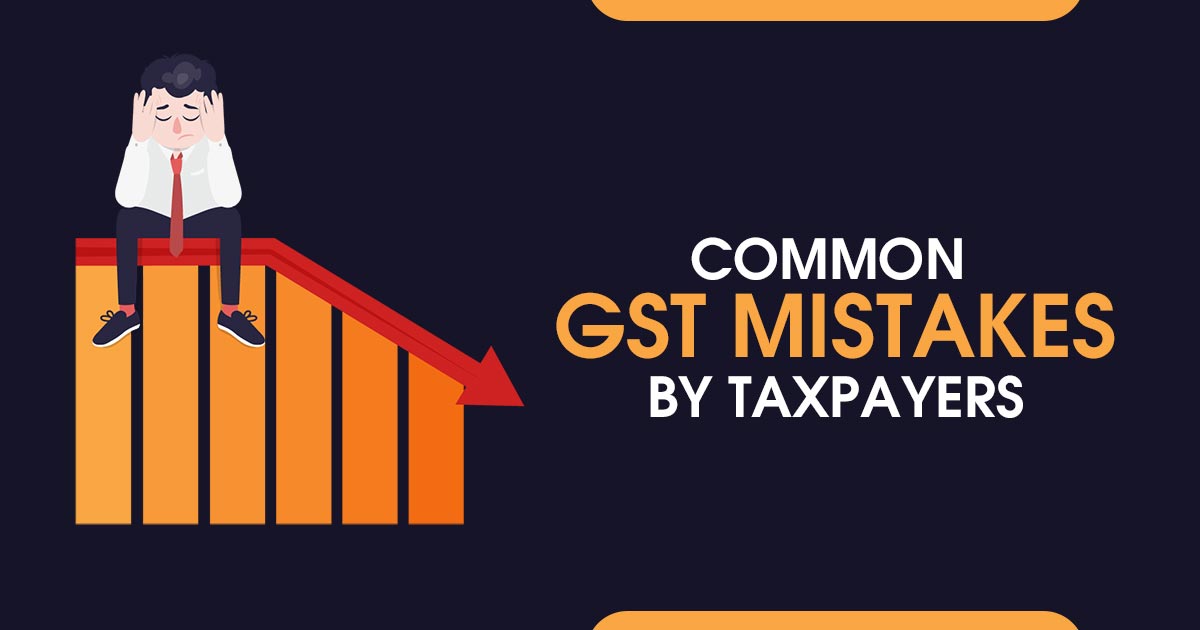
“To err is human”. However, this is not the concern of the errors or mistakes in the GST. in this discussion we see some common mistakes done via assessee in GST. These glitches are normal and would be good if prevented.
Not Yet Done Aadhaar Card Authentication
From 1st January 2022, Rule 10B has been reported to provide the Aadhaar authentication under GST for the registered individuals is essential for the use of
- Furnishing of Application for revocation of cancellation of registration.
- Filing of Refund Application in Form RFD-01
- Refund Beneath rule 96 of the IGST furnished on Goods Exported out of India.
Incomplete Aadhaar authentication would point to the issues for the concern of the assessee whose enrollment has been cancelled and sees to apply for revocation and revealed that there is a mismatch of the details between as given in the Aadhaar and GST database. This the same is suggested to finish the Aadhaar Authentication under GST instantly to all assessee.
Not Using GST Rule 86B Properly
Rule 86B “Restriction on use of amount in Electronic Cash Ledger” will be applicable from the date 1st Jan 2021. The GST rule 86B mentioned that the enrolled individual would not practice the amount available in the electronic credit ledger to release his liability for the output tax in excess of 99% of these tax liability on the condition when these taxable values of supply apart from the exempt supply and the zero-rated supply in the month is more than Rs 50 lakh.
Given that the mentioned limitation would not be applicable here:
- The proprietor or the managing director or any of its two partners whole-time Directors, Members of Managing Committee of Associations or Board of Trustees, as per the case it has paid exceeding Rs 1 lakh as income tax beneath the Income-tax Act, 1961(43 of 1961) in each of the last two financial years where the time limit to furnish the income return beneath the subsection (1) of section 139 of the stated Act has lapsed.
- The enrolled individual had obtained a refund amount exceeding Rs 1 lakh in the former Fiscal year on the grounds of unused ITC beneath clause (i) of the first proviso of sub-section (3) of section 54.
- The enrolled individual has obtained a refund exceeding Rs 1 lakh the former fiscal year on the grounds of the used ITC under clause (ii) of the first proviso of sub-section (3) of section 54.
- An enrolled individual released his liability for the output tax via electronic cash ledger for the amount which is in excess of 1% of the total output tax liability subjected to applied cumulatively, up to the stated month in the present financial year.
- The registered person is:
- Government Department
- Public Sector Undertaking
- Local Authority
- Statutory Body
In recent times the assessee obtained the notices through the council for Non-Compliance of Rule 86B. Thus the same is suggested to examine whether the assessee’s monthly taxable value of supply is more than Rs 50 lakhs follows the Rule 86B.
Not Claiming TDS and TCS Credit
It revealed that there is a lack of knowledge and clarity in between the assessee for TDS or TCS provision beneath GST. beneath the GST act, TDS is needed to be deducted through the central and state governments Local Authority, Governmental Agencies, and informed individuals at the rate of 1% in which the total supplied value beneath a contract is more than Rs 2,50,000 under the invoice exclusive of GST. the same TDS is needed to be deposited to the credit of the government and would be availed through the recipient. The TDS will be shown in the electronic cash ledger of the taxpayer which is to be used to furnish the GST liability along with RCM liability.
Recommended: Full Procedure to File TDS & TCS Credit Received on GST Portal
Beneath the GST act “Every E-Commerce Operator, not being an agent shall collect an amount equal calculated at one per cent on the net value of taxable supplies made through it by other supplies where the consideration with respect to such supplies is to be collected by the operator”. This TCS is needed to be deposited to the credit of the government and the recipient would claim that. TCS amount will be displayed in the electronic cash ledger of the taxpayer that would be used to furnish the GST liability along with the RCM liability.
In some cases, the assessee can treat the TDS/TCS to be TDS/TCS as per Income Tax and Account for the same accordingly. The TDS/TCS is not availed through them and is a direct loss to them.